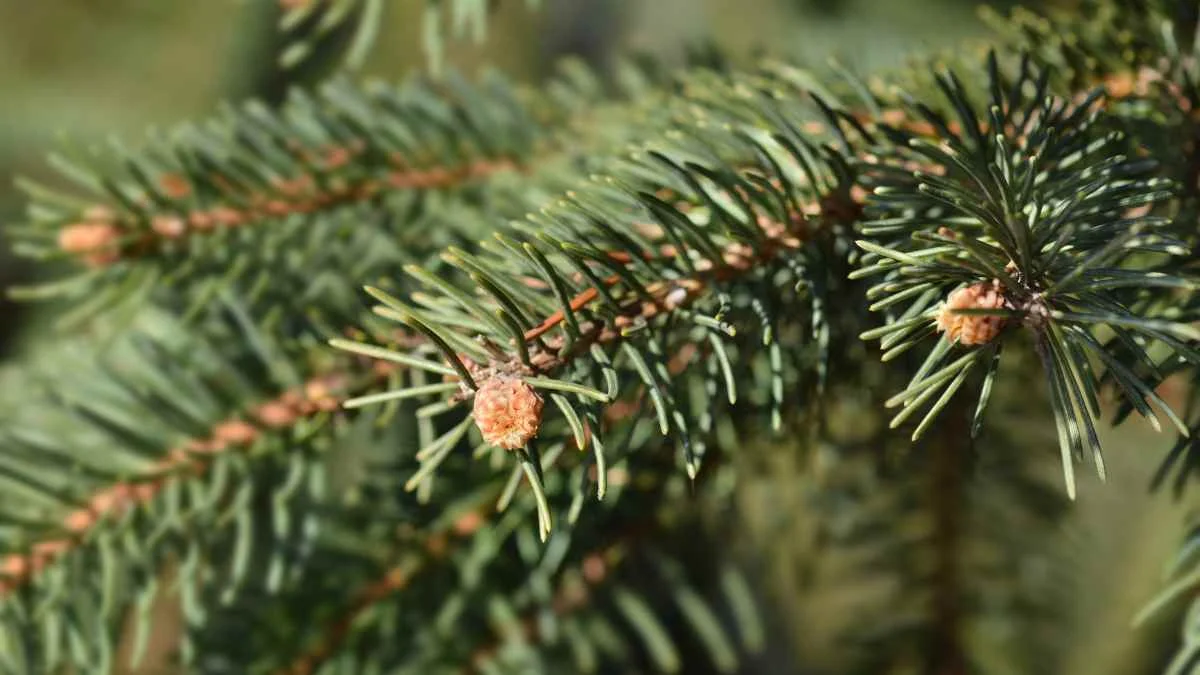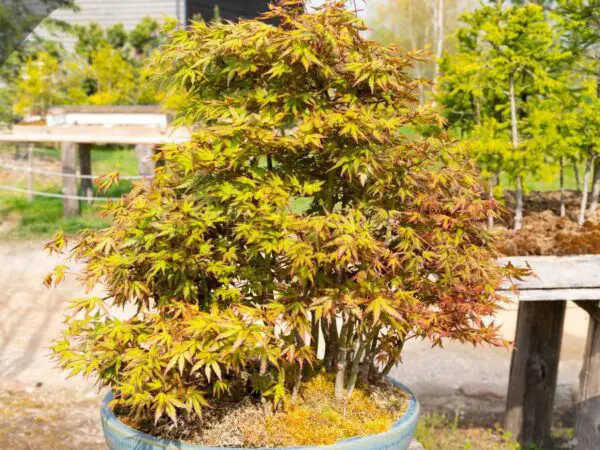When to plant Norway spruce? Knowing when to plant Norway spruce can ensure successful growth and development of this popular evergreen tree.
Norway spruce (Picea abies) is best planted in the early spring or late fall. Planting in the spring allows the tree to establish its root system before the heat of summer, while planting in the fall gives the roots time to settle in before winter. Choose a planting site with well-drained soil and ample sunlight for optimal growth of seeds and shrub. Consider spacing requirements, as Norway spruce trees can reach heights of 40 to 60 feet with spreads of 25 to 30 feet. Providing proper care, including regular watering and mulching, will promote healthy growth and longevity for your Norway spruce trees.
If you're interested in learning more about caring for Norway spruce trees or want tips on landscaping with evergreens, there's a wealth of information available to help you cultivate a vibrant and sustainable garden landscape.
Key Takeaways
- Optimal Planting Time: Plant Norway spruce in early spring or late fall to ensure successful establishment.
- Soil Preparation: Prior to planting, amend the soil with organic matter to improve drainage and fertility.
- Sunlight and Location: Choose a planting location with full sun exposure for optimal growth and development of Norway spruce.
- Watering Schedule: Maintain a consistent watering schedule, especially during the first year after planting, to keep the soil evenly moist.
- Planting Process: Follow proper planting techniques such as digging a hole twice as wide as the root ball and backfilling with soil to avoid air pockets.
- Varieties of Norway Spruce: Consider different varieties of Norway spruce based on size, color, and growth habit to suit your landscaping needs.
Optimal Planting Time
Seasonal Guide
Plant Norway spruce trees in spring or early fall for optimal growth. Ensure planting 6 weeks before the first frost to establish strong roots. Consider the first frost date in Indianapolis around mid-October for accurate timing.
Temperature Impact
Understand how temperature affects Norway spruce growth significantly. Plant your tree to avoid extreme temperature fluctuations that can stress the plant. Monitor temperature changes during the planting period to ensure ideal conditions.
Regional Differences
Adapt planting times based on regional climate variations for successful growth. Consider local frost dates to determine the best time for planting in your area. Adjust care routines according to specific regional conditions to promote healthy development.
Soil Preparation
Testing Soil
Test soil drainage by digging a hole and filling it with water to see how quickly it drains. Check fertility levels through soil testing kits available at garden centers. Ensure the suitable soil pH range of 5.0-6.5 for Norway spruce trees.
Enhancing Fertility
Utilize slow-release fertilizers to provide consistent nutrients over time for enhanced growth. Opt for evergreen-specific fertilizers containing essential elements like nitrogen, phosphorus, and potassium. Seek advice from garden center staff on the best fertilizer options for Norway spruce.
Drainage Importance
Prioritize planting in well-drained soil to prevent water accumulation around the roots. Avoid waterlogging issues by ensuring proper drainage systems or selecting elevated planting locations. Look for areas with good natural drainage, such as slopes or raised beds.
Sunlight and Location
Light Requirements
Plant Norway spruce trees in locations with full sun to promote healthy growth. Ensure a balance of sunlight for optimal development, considering the tree's shade tolerance.
Choosing the Right Spot
When planting Norway spruce, opt for spots with ample sun exposure. Consider proximity to other trees to support optimal growth and select areas with good air circulation for overall tree health.
Watering Schedule
Initial Care
Newly planted trees require deep watering once or twice weekly to establish healthy root systems. Monitor watering closely, especially during hot and dry conditions. It's crucial to maintain a consistent watering schedule until the first hard frost arrives.
Long-term Strategies
For the first few years, ensure regular and sufficient watering to support growth. Once the tree is established, introduce annual feeding to promote overall health. Consider the tree's long-term growth patterns to anticipate and address pruning needs effectively.
Planting Process
Digging the Hole
When planting a Norway spruce, dig holes slightly larger than the root ball to ensure ample space for growth. Ensure proper depth for the root system to establish securely in the soil. Consider soil quality when digging the planting hole to provide optimal conditions for growth.
Positioning the Spruce
Position the Norway spruce tree with the trunk slightly above soil level to promote healthy growth. Ensure proper alignment for future growth direction, allowing the tree to flourish symmetrically. Secure the tree in position to prevent any shifting that may hinder its development.
Aftercare Steps
Monitor the tree's health post-planting for signs of stress such as wilting foliage or stunted growth. Continue deep watering until the first hard frost to support root establishment and new growth. Implement aftercare routines such as mulching and regular inspections to ensure the tree thrives in its new environment.
Varieties of Norway Spruce
Popular Types
Norway spruce offers various options for landscaping, such as the Picea abies "Acrocona" with its unique red cones. This variety adds a pop of color to your garden. Another popular choice is the Picea abies "Pendula," known for its weeping branches that create an elegant look. Consider different height and shape variations to enhance the aesthetic appeal of your landscape.
- Choose based on space availability and design preferences.
- Picea abies "Cupressina" is ideal for narrow spaces due to its columnar shape.
- Picea abies "Inversa" features drooping branches, perfect for a cascading effect in gardens.
Choosing for Your Garden
When selecting Norway spruce varieties for your garden, consider the size of your outdoor space. Opt for compact varieties like Picea abies "Nidiformis" for small gardens or containers. For larger gardens, choose taller varieties like Picea abies "Formanek." Consider growth habits such as slow-growing or fast-growing trees when planning your landscaping.
- Ensure the tree types you choose complement your garden's overall design.
- Picea abies "Little Gem" is a dwarf variety suitable for rock gardens or small spaces.
- Picea abies "Tompa" is a slow-growing option that works well in confined areas.
Fertilizing Practices
When to Fertilize
Norway spruce trees thrive best when fertilized in the spring, promoting optimal growth and health. Choose slow-release fertilizers to ensure a sustained and consistent nutrient supply for the trees.
Best Fertilizers
For Norway spruce trees, it is essential to select fertilizers with balanced nutrients to support overall tree health. Research different options available and opt for evergreen-specific fertilizers to enhance the growth of these trees.
Pruning and Maintenance
Pruning Time
Plan pruning sessions to shape Norway spruce trees effectively. Optimal timing for pruning is in late winter or early spring. This period ensures minimal stress on the tree.
Consider following proper pruning techniques to promote tree health and growth. By pruning during the recommended seasons, you encourage new growth and maintain the tree's structural integrity.
Techniques for Health
Implement pruning techniques that contribute to maintaining the overall health of your Norway spruce trees. Regularly monitor tree growth for any signs of disease or pest infestation.
To safeguard against common tree health issues, consider taking preventive measures such as regular inspections and timely treatments when necessary.
Protecting from Pests
Common Threats
Norway spruce trees are susceptible to pests such as aphids, spider mites, and spruce budworms. These pests can cause significant damage to the trees by feeding on their needles and bark. To protect Norway spruce trees, it is essential to identify these common threats early on.
Implementing strategies like regular inspection and proper pruning can help prevent pest infestations. Using physical barriers like burlap can deter pests from attacking the trees. By monitoring tree health regularly, you can catch any signs of pest infestation before it becomes severe.
Prevention Tips
To maintain the health of Norway spruce trees, it is crucial to implement preventive measures against pests and diseases. Utilizing natural remedies such as neem oil or insecticidal soap can help control common pest problems without harming the environment.
Consulting with arborists or tree care professionals can provide personalized prevention strategies based on the specific needs of your Norway spruce trees. They can offer guidance on pruning, fertilization, and overall tree maintenance practices to ensure optimal health and resilience against pests.
Summary
In summary, planting Norway spruce trees requires careful consideration of the optimal planting time, soil preparation, sunlight requirements, watering schedule, planting process, tree varieties, fertilizing practices, pruning, maintenance, and pest protection. By following these guidelines, you can ensure the successful growth and health of your Norway spruce trees. Remember to plant at the right time, provide adequate sunlight and water, choose the appropriate variety, fertilize correctly, maintain through pruning, and protect from pests to enjoy beautiful and thriving trees in your landscape.
Take action now by applying these steps to plant your Norway spruce trees effectively. Your efforts will be rewarded with lush greenery and a vibrant garden that enhances the beauty of your outdoor space. Embrace these practices to create a welcoming environment filled with the natural charm of Norway spruce trees.
Frequently Asked Questions
When is the optimal planting time for Norway spruce?
The best time to plant Norway spruce is in the spring or fall. Planting during these seasons allows the tree to establish its roots before extreme weather conditions set in.
How should I prepare the soil for planting Norway spruce?
Prepare well-draining soil by loosening it to a depth of at least 12 inches. Mix in organic matter like compost to improve fertility and drainage, ensuring optimal conditions for Norway spruce growth.
What sunlight and location requirements are ideal for Norway spruce?
Norway spruce thrives in full sun but can tolerate partial shade. Choose a location with good air circulation and adequate space for the tree's mature size, providing it with ample sunlight.
What is the recommended watering schedule for Norway spruce?
Water newly planted Norway spruce deeply once a week during dry spells. Established trees may only need supplemental watering during prolonged droughts, ensuring the soil remains consistently moist but not waterlogged.
How do I protect my Norway spruce from pests?
To protect your Norway spruce from pests, regularly inspect the tree for signs of infestation such as yellowing needles or abnormal growth. Consider using insecticidal soaps or horticultural oils as eco-friendly pest control options.
Image Source: Paid image from CANVA



